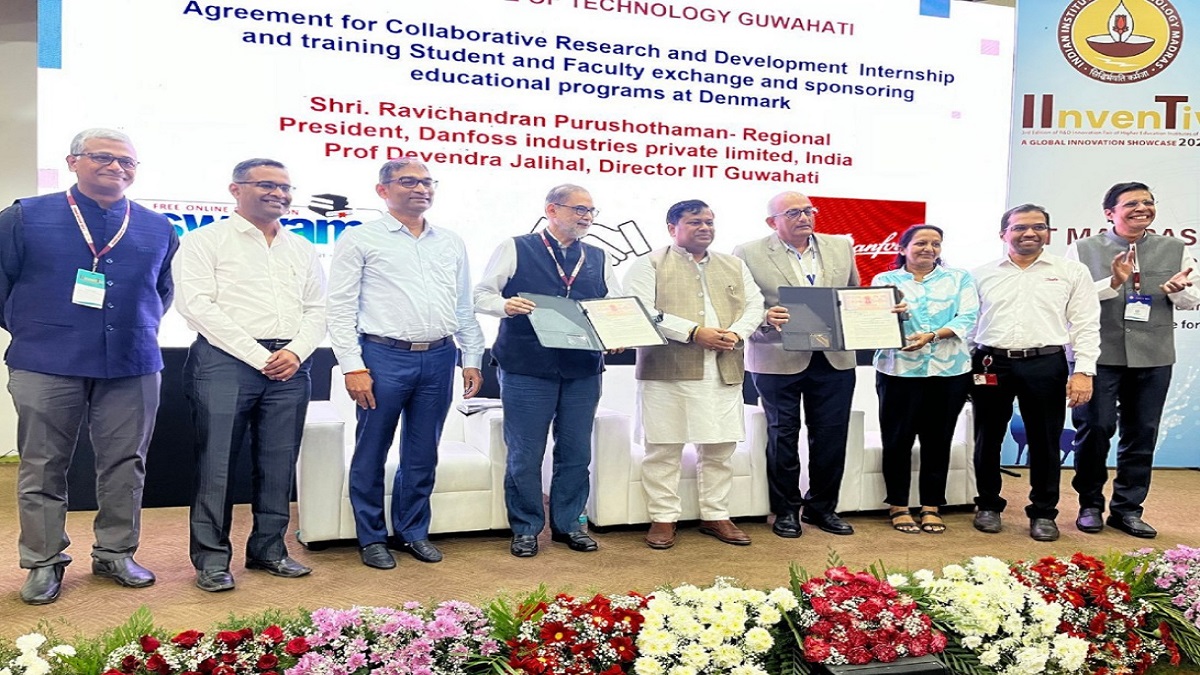IIT Madras Develops Advanced Framework to Shield Critical Infrastructure from Ballistic Missile Threats
Researchers at IIT Madras have developed an advanced framework to safeguard critical infrastructure from ballistic missile threats, enhancing national security and defence resilience.
Researchers at the Indian Institute of Technology Madras (IIT Madras) have developed a framework to enhance the protection of critical infrastructure against ballistic missile threats. This framework enables designers to create innovative solutions for improving the ballistic resistance of reinforced concrete (RC) panels. Through advanced computational simulations, the researchers analyzed the impact of missiles on RC, the primary material used in constructing essential structures such as military bunkers, nuclear power plants, bridges, and runways.
Concrete structures are vulnerable to highly localized damage, including penetration, perforation, scabbing, spalling, and crushing under projectile impact loads. Given their strategic significance, it is crucial to protect these structures from projectile and debris impacts, which can cause localised damage or even lead to structural collapse.
What is Ballistics?
Ballistics is an engineering discipline that focuses on the launch, flight dynamics, and impact effects of projectiles such as bullets, bombs, and rockets. This science plays a crucial role not only in designing military bunkers but also in strengthening the walls of nuclear power plants, bridges, and other critical infrastructure to withstand high-impact forces.
IIT Madras Researchers conducted the study during ‘Finite Element’ (FE) Simulation, a computational technique used to simulate and analyze physical phenomena in engineering and science. FE simulation relies on the Finite Element Method (FEM), a numerical approach for solving complex problems involving partial differential equations. These problems often arise in fields like structural mechanics, among others.
In this study, Dr. Alagappan Ponnalagu, Assistant Professor in the Department of Civil Engineering at IIT Madras, along with research scholar Roouf Un Nabi Dar, developed a novel performance-based design framework for reinforced concrete (RC) panels. The framework is based on key parameters such as Depth of Penetration (DOP) and Crater Damage Area. Additionally, the researchers proposed a probabilistic formula for estimating the crater diameter in RC panels, enhancing predictive accuracy in structural impact analysis.
Elaborating on this research, Dr. Alagappan Ponnalagu, Assistant Professor, Department of Civil Engineering, IIT Madras, said, “Ballistic design is crucial for widely utilised concrete structures in today’s unpredictable world. Usually, extensive experimental and numerical studies have been done to investigate concrete panels, resulting in design guidelines for local damage parameters. However, with the advent of performance-based design, the ballistic design of concrete structures lacks a comprehensive design philosophy. We have now provided a reliable design formula for estimating crater diameter in addition to the development of a novel performance-based ballistic design framework for RC panels. This study is helpful not only in terms of providing the ballistic design framework and probabilistic crater quantifications formula but also in understanding the ballistic behaviour of RC panels.”
Follow Shiksha.com for latest education news in detail on Exam Results, Dates, Admit Cards, & Schedules, Colleges & Universities news related to Admissions & Courses, Board exams, Scholarships, Careers, Education Events, New education policies & Regulations.
To get in touch with Shiksha news team, please write to us at news@shiksha.com

Latest News
Next Story

IIT Madras BSc seat allotment is based on rank obtained by candidates in the JEE Main and IISER Aptitude Test (for BS plus MS dual degree programme). The total seat intake for the BSc/ BS programme across various specialisations is 128. Check below the specialisation-wise IIT Madras BSc seat intake:
Note: This information is sourced from official website/ sanctioning body and is subject to change.